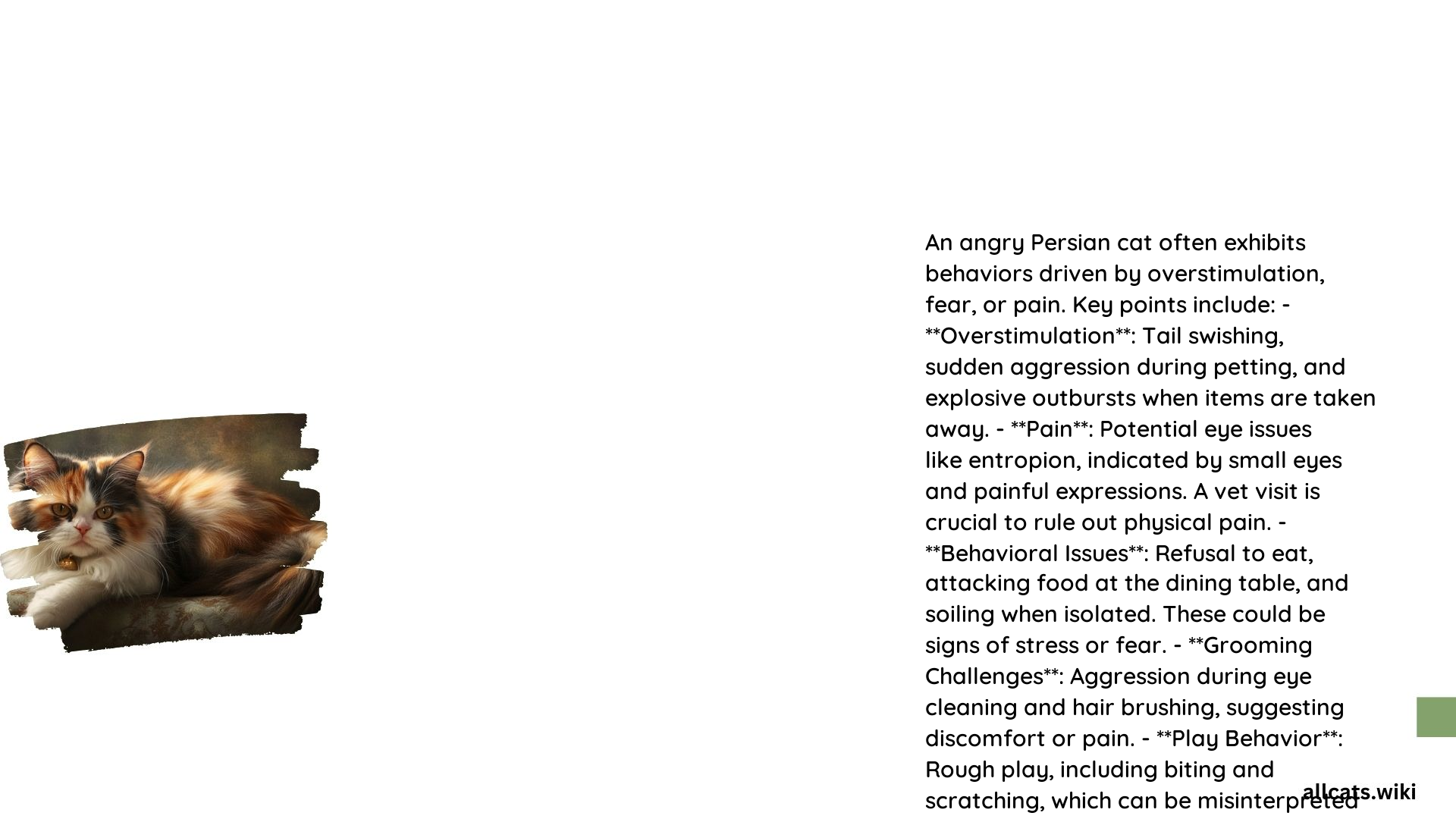Understanding Angry Sounds and Behavior in Persian Cats
Persian cats are known for their distinctive appearance, with their flat faces and fluffy coats. However, these unique features can also contribute to their temperament, leading to angry outbursts and aggressive behavior. In this comprehensive guide, we’ll explore the causes of angry sounds in Persian cats, identify health issues through grunting, and provide effective strategies to manage these behaviors.
What Causes Angry Sounds When Seeing Other Cats?
-
Territorial Threat and Fear:
Persian cats, like other felines, can exhibit aggressive behavior when they feel threatened or when their territory is invaded. When your Persian cat sees other cats, it may hiss, growl, or snarl due to fear or territorial threat. These sounds are often accompanied by defensive postures such as an arched back, puffed-up hair, and flattened ears. -
Genetic and Breed Characteristics:
While the flat face and peke-faced characteristics of Persian cats do not directly cause anger, they can contribute to breathing difficulties and eye problems, which might lead to irritability. However, the primary triggers for angry outbursts are more behavioral and environmental rather than purely physical.
How Can Grunting Sounds Identify Health Issues?
-
Pain and Discomfort:
If your Persian cat is grunting, it could be a sign of pain or discomfort. This is particularly relevant for Persian cats due to their brachycephalic (flat-faced) skull structure, which can lead to respiratory issues and eye problems. If your cat’s eyes appear small or if there are signs of stress, it may indicate underlying health issues such as entropion (a condition where the eyelid rolls inward). -
Anxiety and Stress:
Grunting sounds can also be indicative of anxiety or stress. For example, if your cat is experiencing stress during grooming or when separated from you, it may grunt or exhibit other aggressive behaviors.
What Are the Common Triggers for Angry Outbursts?
-
Attention Seeking:
Persian cats can become aggressive if they feel neglected or if they are seeking attention. This can manifest as jumping on counters, meowing excessively, or even attacking food on the dining table. -
Resource Guarding:
If your cat feels that its resources (food, toys, space) are being threatened, it may become aggressive. This is a common issue if the cat feels it needs to protect its belongings. -
Play Aggression:
Persian cats, especially younger ones, can exhibit play aggression which may be mistaken for anger. This includes biting, scratching, and pouncing, which are normal play behaviors but can be misinterpreted as aggressive.
How Can You Effectively Manage Angry Outbursts?
-
Provide Adequate Attention and Play:
Ensure your cat has enough playtime and interactive toys to keep it engaged and satisfied. This can help reduce attention-seeking behaviors. -
Correct Behavioral Issues Early:
Addressing behavioral issues early, such as counter surfing or food aggression, can prevent them from becoming habitual. Use positive reinforcement techniques and deterrents like double-sided tape or motion sensors. -
Regular Grooming and Health Checks:
Regular grooming is crucial for Persian cats to prevent eye and hair issues. However, if your cat is aggressive during grooming, it may be a sign of underlying pain or discomfort, and a vet visit is advisable. -
Manage Environmental Stress:
Reduce stress by providing a calm environment. If your cat is experiencing anxiety, consider consulting a behavioral expert or using calming aids under veterinary advice.
Practical Steps to Reduce Anger Expression
-
Bonding Through Play:
Engage in regular play sessions using interactive toys to strengthen your bond with your cat and reduce aggression. -
Positive Reinforcement:
Reward good behavior with treats and praise to encourage positive interactions. -
Veterinary Consultation:
If your cat’s behavior persists or worsens, consult a veterinarian to rule out any underlying health issues. A vet can also provide guidance on managing behavioral problems.
Relevant Details on Persian Cat Characteristics
- Flat Face and Eye Issues:
The brachycephalic nature of Persian cats can lead to breathing difficulties and eye problems, which might contribute to irritability. However, these physical characteristics do not directly cause anger but can exacerbate stress and discomfort.
Reference Links
- Understanding Cat Noises and Behaviors:
-
Persian Cat Behavior Tips:
-
Identifying Health Issues in Cats:
- My Persian Cat Has Anger Management Issues : r/persiancat – Reddit

